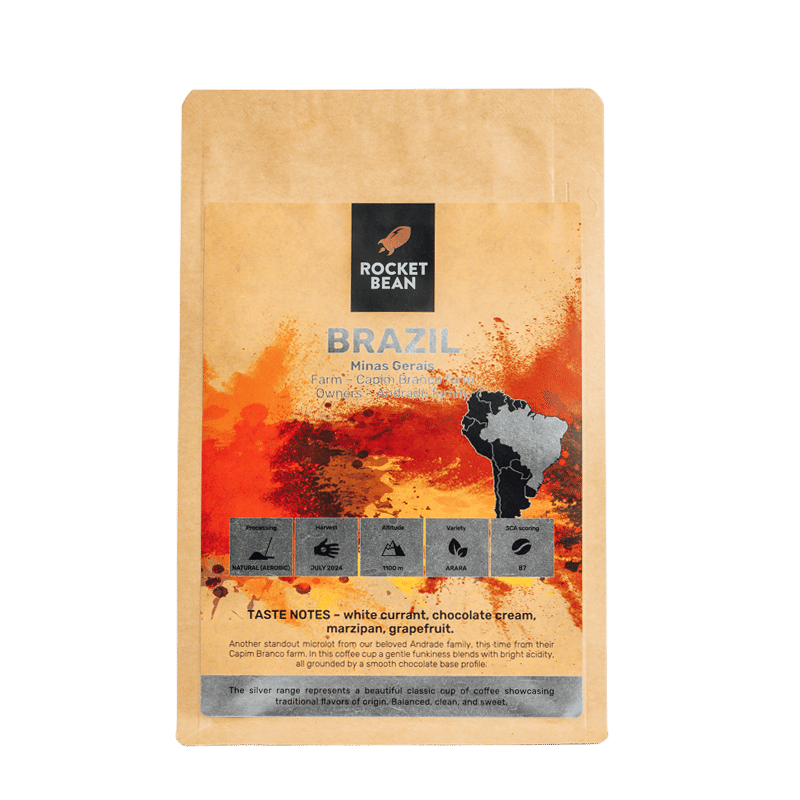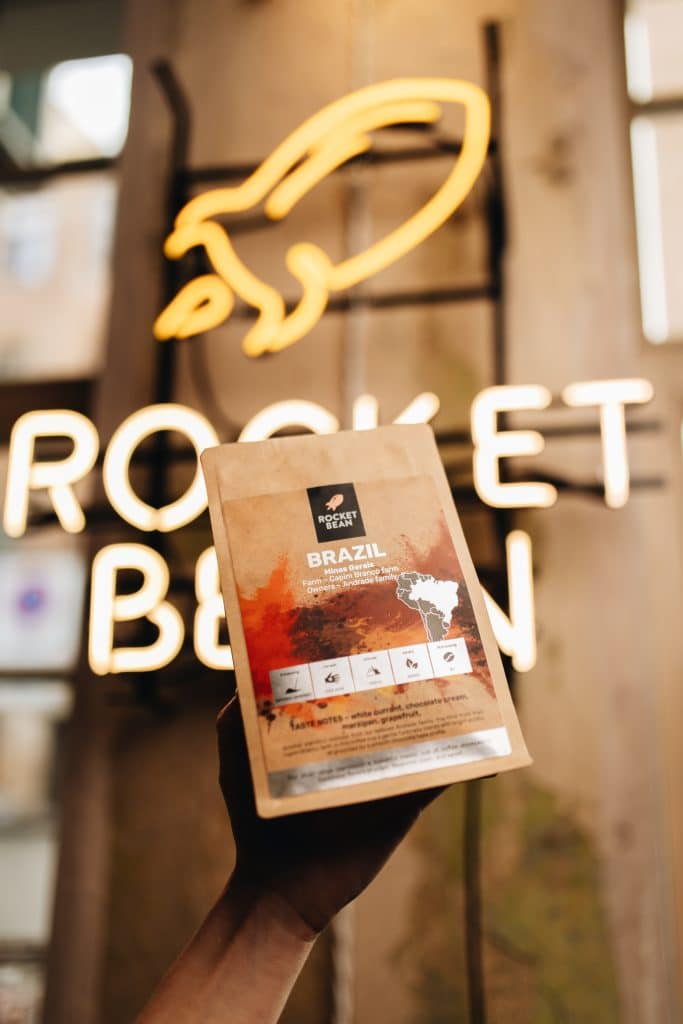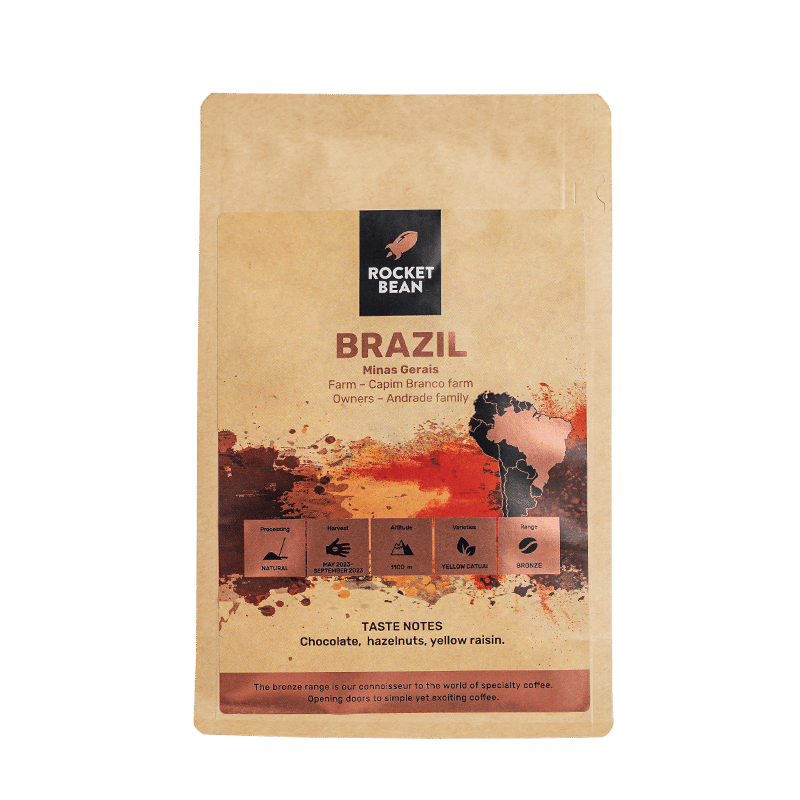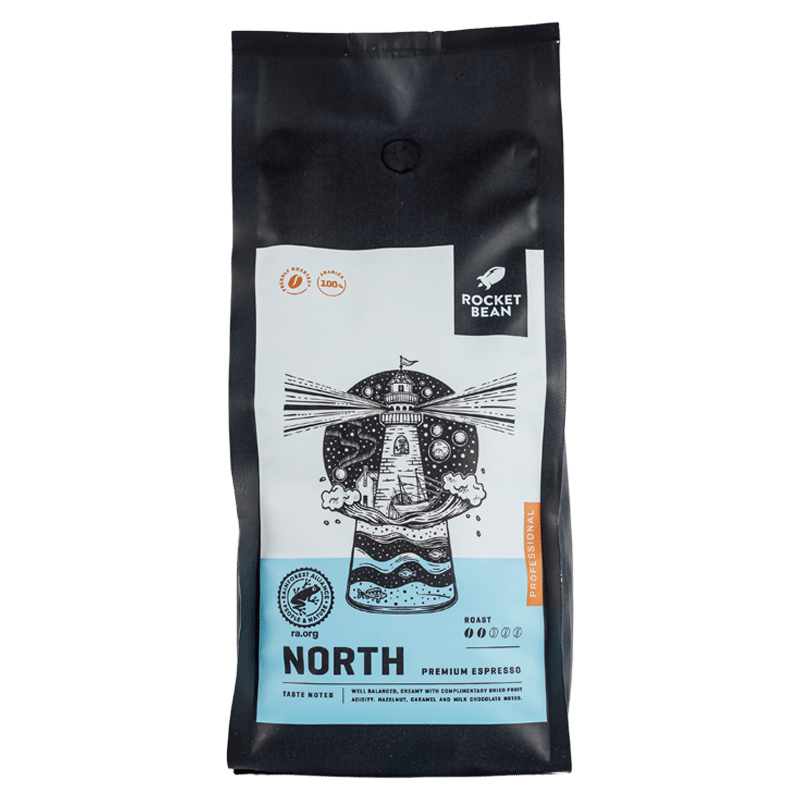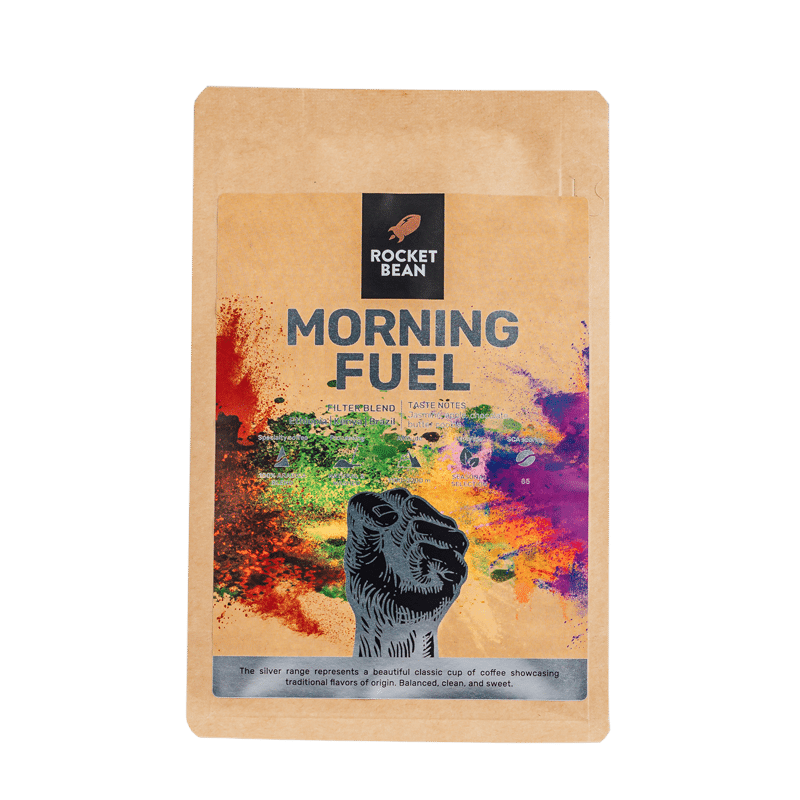Brazil | Capim Branco, Natural (Aerobic)
Filter
- Country: Brazil
- Region: Minas Gerais
- Producers: Andrade family
- Taste and Arome: white currant, chocolate cream, marzipan, grapefruit
12,50 €
10,00 €
Processing
Natural (Aerobic)
Harvest
July 2024
Altitude
1100 m
Variety
Arara
Scoring
87
Another standout microlot from our beloved Andrade family, this time from their Capim Branco farm. In this coffee cup a gentle funkiness blends with bright acidity, all grounded by a smooth chocolate base profile.
Brazil & Minas Gerais:
Minas Gerais – in Portuguese means ‘’General Mines’’, named after the Gold Rush in the 18th century and is the largest coffee-growing state in Brazil, accounting for nearly 50% of the total coffee grown. The cultivation of coffee beans helped the country expand into the powerhouse to where it is today. To a great extent, it was responsible for the development of the southeastern region of Brazil – the wealthiest part of the country today.
For more than 100 years, Brazil is still the world’s largest coffee producer, yet growers are beginning to focus more on quality than quantity around the country. One of the perfect examples is our partner — the Andrade family.
Arara
The Arara coffee variety originates from Brazil and was developed through a natural cross between the Obatã and Yellow Catuai varieties. Known for its high yield and disease resistance, Arara is a popular variety among Brazilian coffee producers. It thrives in various growing conditions, making it a versatile option for farmers.
In terms of flavor, Arara coffee is characterized by its sweet, chocolatey taste with subtle almond notes. It typically has a mild acidity and a smooth finish, which makes it approachable for a wide range of coffee drinkers. When grown at higher altitudes, Arara can also display floral and fruity nuances, adding complexity to its flavor profile. This has helped it gain popularity in the specialty coffee market and score highly in coffee competitions, further cementing its reputation for quality.
Lot:
For micro-lots like this one, first, it is the choice of the correspondent coffee variety for the planned processing method. Due to the high level of natural sugar in the coffee cherries, farmers have chosen the Yellow Catuai variety. Then, at the beginning of July 2024, when coffee cherries have reached their peak of ripeness, a highly advanced machine harvests them from coffee trees. After the harvesting, coffee cherries go through a two-step sorting process where floaters and unevenly ripened cherries are separated. Then, selected cherries are put inside open-air tanks to ferment at ambient temperature (average 23 degrees Celsius). While fermenting, the temperature naturally increases, and after 48 hours, the lot has reached the appropriate temperature – around 35 degrees Celsius. At this point, cherries have reached the desired result and are removed from the fermentation tank. Afterwards, they are transported to raised beds to be slow-dried for 21 days for superior uniformity in the coffee cup.
